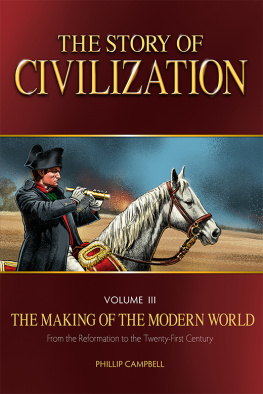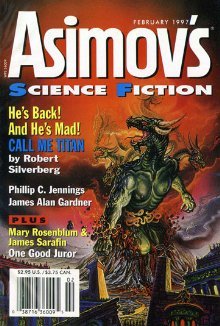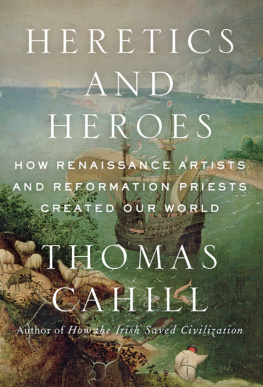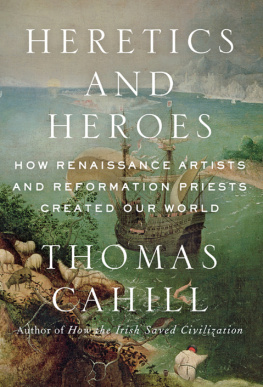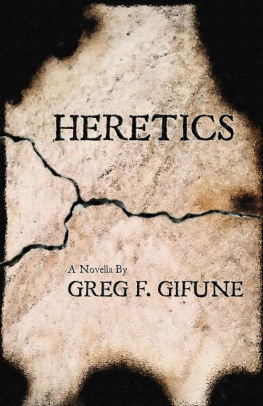Phillip Campbell - Heroes & Heretics of the Reformation
Here you can read online Phillip Campbell - Heroes & Heretics of the Reformation full text of the book (entire story) in english for free. Download pdf and epub, get meaning, cover and reviews about this ebook. year: 2017, publisher: TAN Books, genre: Religion. Description of the work, (preface) as well as reviews are available. Best literature library LitArk.com created for fans of good reading and offers a wide selection of genres:
Romance novel
Science fiction
Adventure
Detective
Science
History
Home and family
Prose
Art
Politics
Computer
Non-fiction
Religion
Business
Children
Humor
Choose a favorite category and find really read worthwhile books. Enjoy immersion in the world of imagination, feel the emotions of the characters or learn something new for yourself, make an fascinating discovery.

- Book:Heroes & Heretics of the Reformation
- Author:
- Publisher:TAN Books
- Genre:
- Year:2017
- Rating:3 / 5
- Favourites:Add to favourites
- Your mark:
- 60
- 1
- 2
- 3
- 4
- 5
Heroes & Heretics of the Reformation: summary, description and annotation
We offer to read an annotation, description, summary or preface (depends on what the author of the book "Heroes & Heretics of the Reformation" wrote himself). If you haven't found the necessary information about the book — write in the comments, we will try to find it.
Heroes & Heretics of the Reformation — read online for free the complete book (whole text) full work
Below is the text of the book, divided by pages. System saving the place of the last page read, allows you to conveniently read the book "Heroes & Heretics of the Reformation" online for free, without having to search again every time where you left off. Put a bookmark, and you can go to the page where you finished reading at any time.
Font size:
Interval:
Bookmark:
HERETICS
of the Reformation
HERETICS
of the Reformation
Phillip Campbell
TAN Books
Charlotte, North Carolina
Copyright 2017 Phillip Campbell.
All rights reserved. With the exception of short excerpts used in articles and critical review, no part of this work may be reproduced, transmitted, or stored in any form whatsoever, printed or electronic, without the prior written permission of the publisher.
Unless otherwise noted, Scripture quotations are from the Revised Standard Version of the BibleSecond Catholic Edition (Ignatius Edition), copyright 2006 National Council of the Churches of Christ in the United States of America. Used with permission. All rights reserved.
Excerpts from the English translation of the Catechism of the Catholic Church for use in the United States of America 1994, United States Catholic Conference, Inc.Libreria Editrice Vaticana. Used with permission.
Cover design by Caroline Kiser
Library of Congress Control Number: 2017944220
ISBN: 978-1-5051-0870-5
Published in the United States by
TAN Books
P.O. Box 410487
Charlotte, NC 28241
www.TANBooks.com
Printed and Bound in the United States of America.
To all my students, current and formerespecially the history nerds
I would also like to thank Ryan Grant for his help with .
R eformation. As soon as the word is uttered, we immedi-ately realize we are dealing with a loaded term. It implies two agents, an active and a passiveone initiating reform, the other the object of reform. What was being reformed? Was it truly in need of reform? What constituted the reform? Who was behind the reform, and what were their motives? These are big questions, the answers to which are inextricably linked to other questions, which are difficult to answer without an appeal to principles beyond history.
When historians refer to the Reformation, they are referring to both a series of events as well as a general epochor perhaps a general epoch characterized by a certain series of events. The events of the Reformation era brought the Catholic Church into conflict with various sectarian movements that were united essentially by their rejection of the Catholic Churchs claims, as well as its prominent role in medieval civilization, but divided on many other critical points. How long this conflict continued depends upon whom you ask. The year 1648 is a common cut-off date for the Reformation, as that year marks the Peace of Westphalia that ended the Thirty Years War, the last of Europes religious wars. Others might draw the era out until 1689, the so-called Glorious Revolution in England that saw the overthrow of James II, the last Catholic king of England, by Protestant parliamentarians.
For the sake of this book, I take the Reformation up to about the year 1598, the year King Henry IV of France promulgated the Edict of Nantes ending Frances wars of religion. This is not to say nothing of import passed between Catholics and Protestants after this date, but by 1598 the basic contours of post-Reformation Europe have definitively been sketched out. Protestantism was firmly entrenched in those kingdoms where it had taken root, the Catholic Church had reoriented, dare we say reformed, itself in light of the decrees of the Council of Trent, and the theological positions of Catholics and the differing Protestant groups had been worked out.
Though this book makes every attempt at historical objectivity, it is certainly written from a Catholic viewpoint; that is, it presumes that the claims of the Catholic Church to be the Mystical Body of Christ are true, that the Bishop of Rome is the successor of St. Peter and Vicar of Christ. This does not mean the book universally bashes Protestants while vindicating Catholics. Every era has its heroes and its villains, and Catholics are certainly numbered on both sides. Rather, I have attempted with this book to understand the theological, social, and political causes of the Reformation through the experiences of some of the most important people of the age.
What lessons can we, both Catholics and others, learn from the history of the Reformation era? In this year, the five hundredth anniversary of the posting of Martin Luthers 95 Theses, should the events of 1517 and beyond be celebrated or condemned? What practical benefit can we derive from studying this tumultuous period?
It is my hope that the answers to these and other questions will become clear as we journey through the sixteenth century. We will learn about not only the events of the era but the people who shaped those events. We will see how there is nothing more revolutionary or earth-shattering than an idea. We will see how new ideas concerning the nature of faith and the role of the Church in the world caused massive societal upheaval that effectively brought medieval civilization to a close and ushered in modernity. And we will do this through examining the lives of some of the major figures who lived through and influenced that tumultuous era, that age of storms.
St. Peter Canisius
I t is May 1521. We are in the Dutch city of Nijmegen, an ancient, sprawling metropolis nestled beside the Waal River in the eastern reaches of Holland. Nijmegen is a typical Dutch city of the late medieval period. With the gently flowing waters of the Waal providing direct access to the Atlantic, the medieval tradesmen of Nijmegen have grown wealthy as merchants in shipping. Growing from its ancient center on the southern banks of the Waal, by the sixteenth century the city had spilled over onto the northern side of the river. If we were to stroll through the narrow, bustling streets of Nijmegen in 1521, we would see an eclectic blend of older medieval structures and more modern buildings, reflecting the growing wealth of Nijmegens merchants.
Like most Dutch cities of the age, Nijmegen enjoyed a considerable degree of autonomy. It was governed by a municipal council composed of a cross section of the citys most wealthy and important men. This body in turn elected a burgomaster, a kind of mayor. The burgomaster of Nijmegen in 1521 was Jacob Kanis, a notable citizen of considerable wealth. We do not know much about the life of Jacob Kanis, but as the political class throughout Holland was dominated by its financial interests, we may presume Jacob was involved in various shipping ventures, as were most of Nijmegens elite.
As burgomaster Jacob must have been perpetually engaged with local civic affairs, in addition to mediating the relationship between his city and his temporal lord, Emperor Charles V, the Holy Roman emperor; then, as now, political office was a paradox of privilege and grinding responsibility. And, of course, Jacob still had to attend to his personal business affairs.
In May of 1521, however, Jacob Kanis had other things on his mind besides business and politics. His wife, Aegidia, was about to give birth. We may imagine the scene in the Kanis home when Aegidia went into labor: servants bustling here and there, bringing fresh water and linens; the midwives attending to their mistress as she works to bring forth her child; Jacob pacing anxiously in the drawing room awaiting news of the delivery. Childbirth in the 1500s was fraught with danger; it was not uncommon for women to die in labor.
But such will not be the fate of Aegidia. It is not long before the sound of rejoicing is heard from the bedroom. The servants rush excitedly downstairs and bring the happy news to Jacob; his wife has brought forth a healthy baby boy.
The new parents named their boy Peter, after the prince of the apostles. It was May 8, which in 1521 was commemorated as the feast of the Apparition of St. Michael, in memory of a visitation of St. Michael to a small Italian town in the fifth century.
Font size:
Interval:
Bookmark:
Similar books «Heroes & Heretics of the Reformation»
Look at similar books to Heroes & Heretics of the Reformation. We have selected literature similar in name and meaning in the hope of providing readers with more options to find new, interesting, not yet read works.
Discussion, reviews of the book Heroes & Heretics of the Reformation and just readers' own opinions. Leave your comments, write what you think about the work, its meaning or the main characters. Specify what exactly you liked and what you didn't like, and why you think so.

